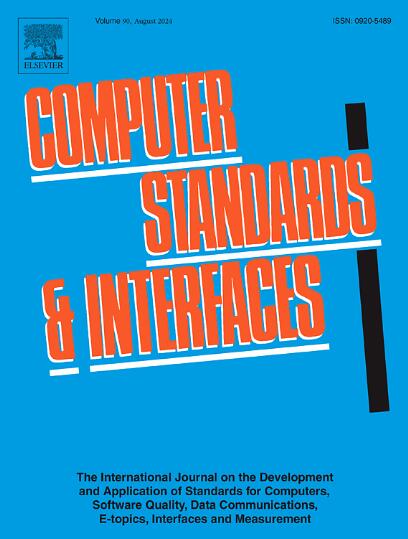DWTAT-DASIS: Fusion of discrete wavelet transform and access tree for distributed authentication in secret image sharing
IF 3.1
2区 计算机科学
Q1 COMPUTER SCIENCE, HARDWARE & ARCHITECTURE
引用次数: 0
Abstract
Secret sharing of distributed data in cloud environments prevents unauthorized and wanton access and misuse by malicious participants. However, when applying secret sharing to image formats, the fixed range of pixel values in images presents unique challenges for share recovery, often resulting in recovery algorithms that reconstruct images in a lossy manner. Moreover, one-way authentication methods for participants in cloud environments are insufficient to address the heightened security demands of high-trust scenarios. This paper presents a secret image-sharing scheme with distributed authentication (DWTAT-DASIS) designed for cloud storage environments. By leveraging Discrete Wavelet Transform and an Access Tree structure, the scheme addresses the limitations of existing approaches (such as compression-based secret sharing and visual cryptography), which fail to provide lossless image recovery and efficient performance. Additionally, DWTAT-DASIS enhances security through fine-grained access control and two-way authentication. Finally, security analysis and experiments were conducted on the proposed protocol, demonstrating its ability to resist common attack methods as well as some deeper-level attack methods, meeting the security requirements for image storage in cloud systems. Experimental analysis shows that compared with similar protocols, this protocol can ensure the integrity of image restoration and greatly reduce the probability of image transmission being attacked.
dwdat - dasis:融合离散小波变换和访问树的分布式认证秘密图像共享
云环境中分布式数据的秘密共享可以防止恶意参与者未经授权和肆意的访问和滥用。然而,当将秘密共享应用于图像格式时,图像中像素值的固定范围给共享恢复带来了独特的挑战,通常导致恢复算法以有损的方式重建图像。此外,云环境中参与者的单向身份验证方法不足以满足高信任场景中更高的安全性需求。提出了一种针对云存储环境的分布式认证秘密图像共享方案(DWTAT-DASIS)。通过利用离散小波变换和访问树结构,该方案解决了现有方法(如基于压缩的秘密共享和视觉加密)的局限性,这些方法无法提供无损图像恢复和高效的性能。此外,DWTAT-DASIS通过细粒度访问控制和双向身份验证增强了安全性。最后,对提出的协议进行了安全分析和实验,证明了该协议能够抵御常见的攻击方法以及一些更深层次的攻击方法,满足了云系统中图像存储的安全需求。实验分析表明,与同类协议相比,该协议能够保证图像恢复的完整性,大大降低图像传输被攻击的概率。
本文章由计算机程序翻译,如有差异,请以英文原文为准。
求助全文
约1分钟内获得全文
求助全文
来源期刊

Computer Standards & Interfaces
工程技术-计算机:软件工程
CiteScore
11.90
自引率
16.00%
发文量
67
审稿时长
6 months
期刊介绍:
The quality of software, well-defined interfaces (hardware and software), the process of digitalisation, and accepted standards in these fields are essential for building and exploiting complex computing, communication, multimedia and measuring systems. Standards can simplify the design and construction of individual hardware and software components and help to ensure satisfactory interworking.
Computer Standards & Interfaces is an international journal dealing specifically with these topics.
The journal
• Provides information about activities and progress on the definition of computer standards, software quality, interfaces and methods, at national, European and international levels
• Publishes critical comments on standards and standards activities
• Disseminates user''s experiences and case studies in the application and exploitation of established or emerging standards, interfaces and methods
• Offers a forum for discussion on actual projects, standards, interfaces and methods by recognised experts
• Stimulates relevant research by providing a specialised refereed medium.
 求助内容:
求助内容: 应助结果提醒方式:
应助结果提醒方式:


